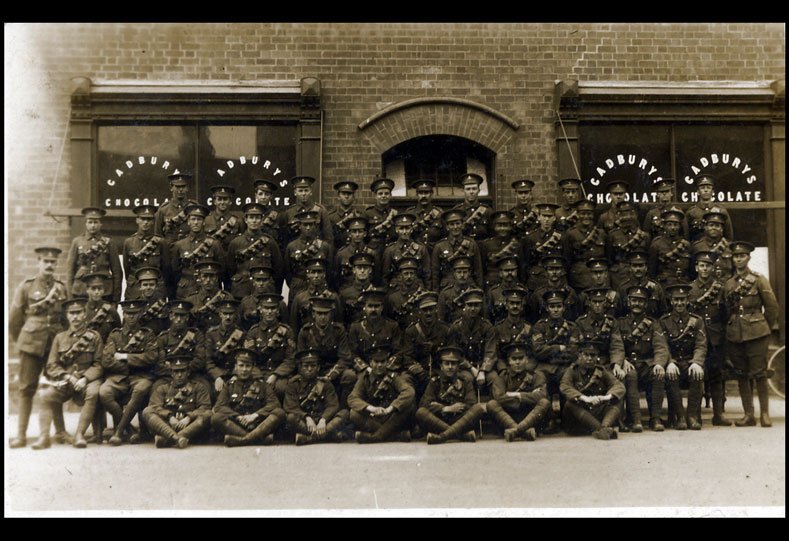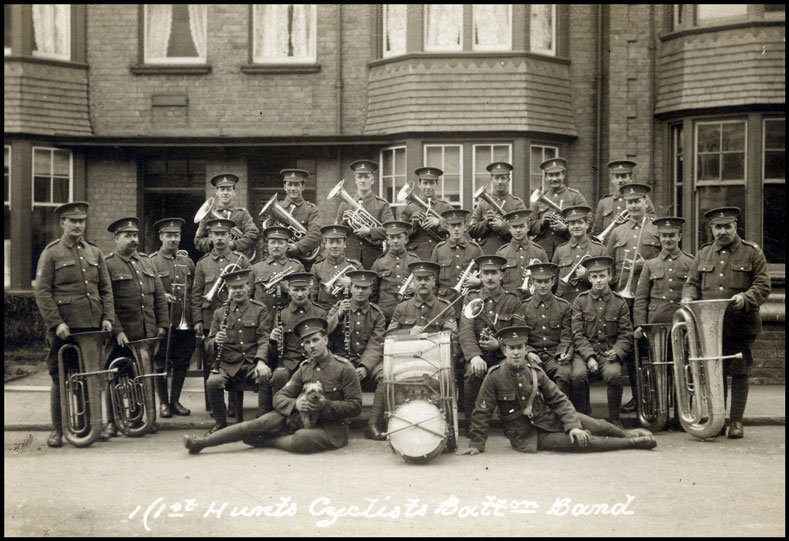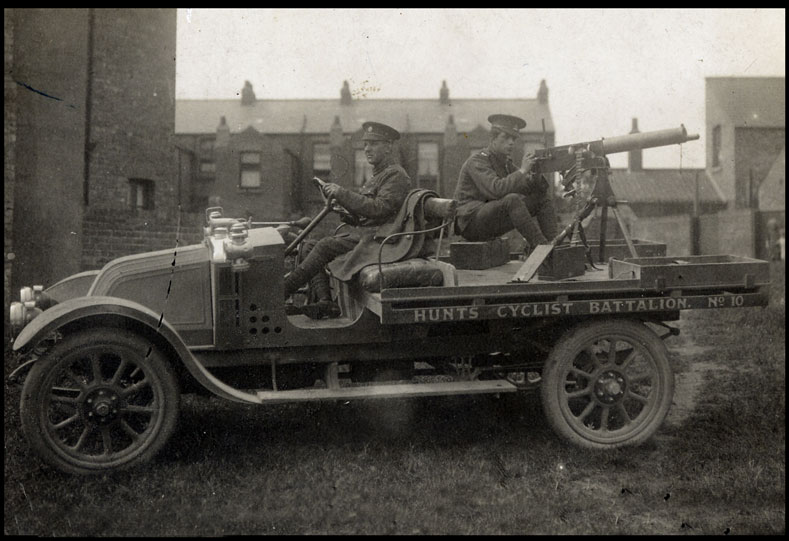By Steve J. Sellwood
During the last quarter of the 19th Century the first tentative steps were taken both here and on the continent to make use of the bicycle as a machine of war. It seems they were first given a military role in Somina, Italy when cyclists were used as messengers during maneuvers.
By 1885 cyclists were being deployed by several Continental armies and this was also the year cyclists were first reported operational in Britain. The Easter maneuvers that year saw the 1st Volunteer Battalion Royal Sussex Regiment using them as scouts in response to an opposing force that included mounted troops.
In December 1887 Lt. Col. A. R. Savile Professor of Tactics at the Staff College, Camberley a man who had already had experience of the cyclists military potential, was appointed as President of a committee to investigate the viability of military cycling and consider the kit and drill requirements. The men from the War office viewed the cyclists' duties as akin to those of Mounted Infantry rather than the less aggressive role of purely messengers.
On 24th February 1888 26th Middlesex (Cyclist) Volunteer Rifle Corps was formed, this was an all cyclist unit of 120 under the command of Lt. Col. A. R. Savile. Small Cyclist Sections were also formed within existing Volunteer Battalions and their performance during subsequent maneuvers proved their worth but also highlighted one or two drawbacks to their use.
The outbreak of the Boer War in 1899 gave the cyclists the chance to show their skills in action in the field under real war conditions. The city of London Imperial Volunteers was one of several cycling corps that were ready for action. The cyclists' main duty in S. Africa was dispatch-riding but other tasks did come their way, among them scouting along railway lines for sabotage using specially modified cycles that were joined together could be ridden along the rails.
In 1908 the Territorial Force was established. The 26th Middlesex (Cyclist) volunteer Rifle corps became the 25th (city of London) Battalion. The London Regiment and nine further Cyclist Battalions were formed at this time. Three of these were from existing Volunteer Battalions and every Territorial Infantry Battalion was given the go ahead to include a cyclist section on its strength. By 1913 the number of Cyclist Battalions had risen to 13 with one more in the pipeline, a Battalion from Huntingdonshire. One result of the Army reorganizations in 1908 was the loss to Huntingdsonshire of its Volunteer Territorial Battalion. The county's contribution was to be two companies of the 5th Battalion the Bedfordshire Regiment. In March 1913 the idea of forming an independent Huntingdonshire Territorial Cyclist Battalion went before the Huntingdonshire Territorial Association and its Chairman, the Earl of sandwich and following semi-official conversations and letters between the Association Headquarters Eastern Command, Lt. Col Butler (c.o. 5th Bedfordshire Regiment) and the War Office resulted in February 1914 the go ahead given for establishment.
The Huntingdonshire Cyclist Battalion had an establishment of a Lt. Col. commanding and a Major Second in Command 8 Companies of 2 Officers and 54 men, 17 motorcyclists as signallers plus a Band. Major E. R. Herbert and captain S. G. Cook of the 5th Bedfordshire Regiment were promoted and appointed respectively the Commanding Officer and the Second in Command of the new Battalion, the Medical Officer was a Dr. J. R. Garrood of Alconbury Hill and the Padre the Rev. K. D. Knowles of Brampton Rectory. Amongst other Officers who joined the Cyclists were George Wyman Abbot a solicitor of Peterborough, Arthur Mellows also a solicitor of Peterborough and Kenneth Hunnybun Solicitor of Huntingdon.
The Honorary colonel of the newly formed Battalion was the Earl of sandwich and recruiting began on the 17th March that year. The officers and men from the two Huntingdonshire Companies of the Bedfordshire Regiment were offered a transfer into the Cyclists and based at the old Huntingdonshire volunteer's Drill Hall in St. Mary's street, Huntingdon with a Battalion Headquarters at Godmanchester, two of the companies (A and B) raised locally with the remaining companies formed at St. Ives and Somersham (c), St. Neots and Kimbolton t (D). Ramsey and Warboys (E) and Fletton, Stanground and Peterborough (F) and (G) with Yaxley and Farcet (H)
The Regimental Band was ready-made in the form of the Fletton Victoria Prize Band, a civilian Brass Band that had played at Territorial functions in the past and this Band joined up more or less on bloc.
Recruiting was rapid and in July 1914 the Battalion went off to Skegness for its first and as it turned out their only fortnight's Annual Territorial Camp although not with a full complement of officers and NCOs. The uniform was the regulation khaki service dress but by July moat if not all the men had also been issued with a blue webb cloth uniform not which was not unlike todays No. 1 dress in style.
Just days after they returned from their Camp, War was declared on August 4th and the Battalion was mobilised and two days later the 550 Officers and men left by train bound for the East Coast to Grimsby.
The Battalion was earmarked for a home defense role and their duties were to patrol the stretch of Yorkshire coast between Scarborough in the North and Spurn point near Grimsby in the South In the meantime back in Huntington, plans to muster a second Battalion of Huntingdonshire cyclists were hurriedly underway. In command of this was a Lt. Col. J. I. Stanley and once trained, this Battalion too were destined initially for coastal guard duties in Lincolnshire.
In the spring of 1915 a Third Battalion was authorized but it was never able to reach full strength and was subsequently disbanded and those men recruited shared between the other two Battalions. After almost two years of training and coastal patrols something like 90% of the First Battalion were drafted to France (28th July 1916) and like all those who followed them, they were rebadged to other Regiments. The Huntingdonshire cyclists were never able to fight as a unit outside these shores and as the war went on, men with no Huntingdonshire affiliations were drafted into the two Battalions.
The Armistice was signed on the 11th November 1918 and it was some time before the two Battalions were finally stood down. The 1st Battalion on the 14th April 1919 and the 2nd Battalion on the 12th December 1919.
A year after the 1st Battalion was disbanded it was to be reconstituted as the 5th (Huntingdonshire Battalion) The Northamptonshire Regiment and many of the serving Huntingdonshire Cyclists were able once again to enlist in their county Territorial Battalion.
Further reading on the Middlesex Cyclists can be found here.